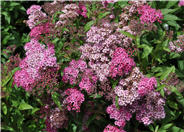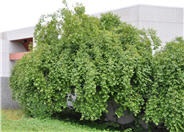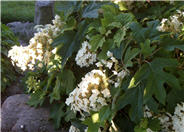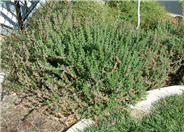
Common name:Little Princess Japanese Spirea
Botanical name:Spiraea japonica 'Little Princess'
The 'Little Princess' is a deciduous shrub with rose-like blooms in the summer, with overall growth reaching a height of 2'-3'.

Common name:Shiny Xylosma
Botanical name:Xylosma congestum
This medium-sized, mounding evergreen shrub with lustrous yellow-green foliage produces new growth that is tinted rosy-red. It has a growth habit that is loose, graceful and spreading.

Common name:Vine Maple
Botanical name:Acer circinatum
This plant is either a shrub or small tree that reaches 35' in height . It has light green leaves which turn orange-scarlet in the fall. It also has new spring foliage with a reddish hue. A. circinatum can be used as an espalier against a wall. To accent Vine Maple effectively, plant it with the Douglas Fir, Western Sword Fern, as well as the Oregon-Grape. It has a color that is especially striking during the fall season.

Common name:Dwarf Oakleaf Hydrangea
Botanical name:Hydrangea quercifolia 'Pee Wee'
And upright shrub with large maple like leaves. It has a very graceful form and it has wonderful white flowers in the spring. The plant is worth adding for the foliage alone but the blooms are to die for.

Common name:Prostrate Trailing Germander
Botanical name:Teucrium X lucidrys 'Prostratum'
This cushion-like ground cover reaches only 6" tall and 2' spreading. White or red-purple summer flowers appear in loose spikes, attracting bees. Leaves are evergreen, toothed and densely cover this ground cover. This plant needs well draining soil as it cannot stand wetness around its roots. It tolerates poor and rocky soil and full sun.
Designer: Jennifer Chandler
Photographer: GardenSoft
Physical weed control, including mulching, or hand removal protects the watershed from harmful chemicals.
Be sure to fix all leaks promptly no matter how small they may seem.
Remove irrigation water and fertilizer from areas where you don't want weeds to grow.